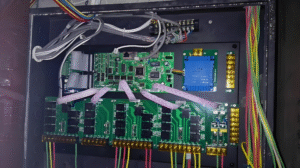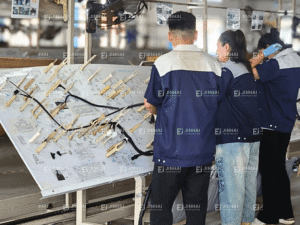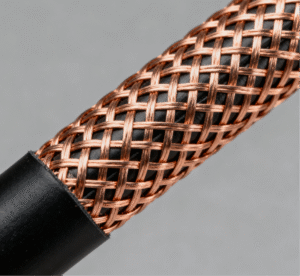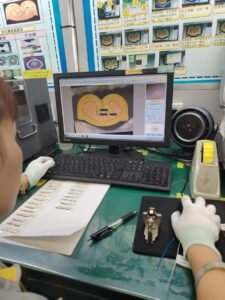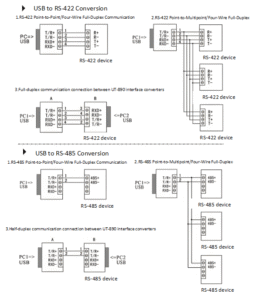New Requirements for New Energy Vehicle Connectors
- New Energy Vehicles: High Voltage Demands
- New energy vehicle powertrains operate at voltages up to 800V, necessitating high-voltage wiring harness connectors. These connectors feature high voltage resistance and strong electromagnetic shielding.
- Intelligent Connectivity: Rapid Data Transmission
- Advanced driver assistance systems require automotive connectors with stable signal transmission, high transmission speeds, and robust shielding performance.
- Lightweighting Requirements
- For new energy vehicles, weight reduction is key to extending driving range. Wiring harness connectors must evolve toward lightweight designs while maintaining performance.

Custom Automotive Connectors: Technical Essentials
Connector performance hinges on design solutions, material selection, and manufacturing processes. When selecting manufacturers, customization capabilities are a critical consideration.
Design Elements of Custom Connectors
- Terminals: Transmit electrical signals.
- Housing: Protective layer for terminals.
- Sealing Ring: Enhances waterproof and dustproof performance.
- Latching Mechanism:
- Primary Latch: Ensures connector engagement with audible confirmation.
- Secondary Locking: Prevents terminals from detaching from the housing due to vibration or cable pulling.
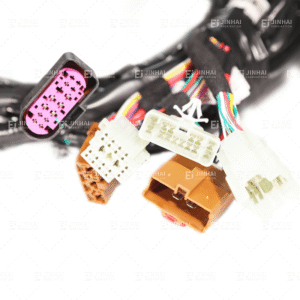
- Misinsertion Prevention and Assist Structures:
- Misinsertion Prevention: Asymmetric shapes ensure correct insertion.
- Insertion/Extraction Assistance: Ensures smooth operation when connectors have numerous pins or high insertion/extraction forces.
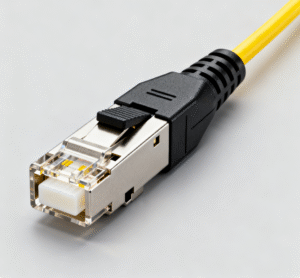
Material Selection
Provides critical assurance for electrical connections during operation.
- Housing Material: Premium ABS plastic offering high-temperature resistance, corrosion resistance, and flame retardancy.
- Terminal Material: Copper alloy providing excellent conductivity and cost efficiency.
- Plating Material: Electroplated terminals deliver low resistance, oxidation resistance, and corrosion protection.
Testing Standards
Connectors undergo rigorous testing to meet global certification requirements.
- Electrical:
- Contact Resistance: Evaluates terminal connection quality.
- Insulation Resistance: Assesses insulation material performance.
- Withstand Voltage: Measures the connector’s voltage-carrying capacity.
- Physical:
- Insertion/Extraction Force: Ensures reliable connection.
- Terminal Retention Force: Force required to pull out terminals, preventing pin disengagement.
- Vibration Resistance: Maintains stable connection under automotive road vibrations.
- Mating cycles: Maximum number of insertions/removals under operational conditions.
- Environmental:
- Temperature cycling: Simulates temperature variations in operational environments.
- Salt spray test: Evaluates corrosion resistance in humid, saline conditions.
- Ingress protection rating: Verifies dust and water sealing performance.
- Chemical resistance: Withstands chemical agent corrosion.
JinHai Professional Customization Process: From Design to Delivery
JinHai is a professional solutions provider with years of industry expertise, deeply understanding client needs in every project. JinHai maintains a closed-loop process from design to delivery, ensuring high-quality solutions for customers.
Step 1: In-depth Requirement Communication and Analysis
Our engineering team thoroughly discusses key factors including application scenarios, electrical loads, environmental constraints, driver cost targets, and project timelines.
Step 2: Solution Design and Component Selection
Design solutions based on requirements, including preliminary selection of connector types, terminal specifications, cable materials, and protection ratings.
Step 3: 3D Modeling and Simulation Validation
Utilize CAD/CAE software for 3D modeling and virtual assembly, performing simulation analysis on critical performance metrics to identify and resolve potential issues before prototyping.
Step 4: Prototype Fabrication and Testing
Rapidly produce functional prototypes and subject them to comprehensive electrical, mechanical, and environmental testing in our ISO/TS 16949-certified in-house laboratory to ensure 100% compliance with design specifications and industry standards.
Step 5: Automated Mass Production and Quality Control
Proceed to batch production upon prototype validation. We possess automated capabilities for wire cutting, terminal crimping, assembly, and 100% electrical continuity testing, supplemented by visual inspection systems and pull-out tests.
Step 6: Delivery and Full-Cycle Technical Support
We offer flexible global logistics solutions and commit to providing continuous technical support and rapid response services throughout the product’s entire lifecycle.
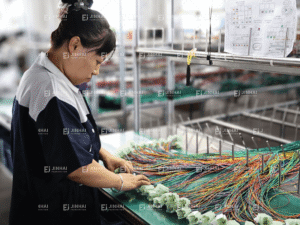
JinHai: Your Trusted Custom Wire Harness and Connector Manufacturer
An outstanding manufacturer should possess the following attributes:
- Industry Certification Standards: ISO 9001, UL, RoHS, and other certifications.
- R&D and Testing Capabilities: Independent design team, mold development expertise, and fully equipped in-house laboratory.
- Automation Level: Automated processes ensure consistent product quality and stability.
- Project Experience & Success Stories: Proven track record in cutting-edge fields like new energy and autonomous driving.
- Supply Chain & Rapid Response: Partners with stable raw material supply and swift customer response mechanisms.
Conclusion
JinHai is dedicated to being a trusted global manufacturer of customized wire harness solutions. We not only possess advanced manufacturing equipment and rigorous production/process workflows but also strictly adhere to IATF16949 and ISO9001 quality management systems.
Choose JinHai to accelerate your project’s success—JinHai grows alongside your projects!
